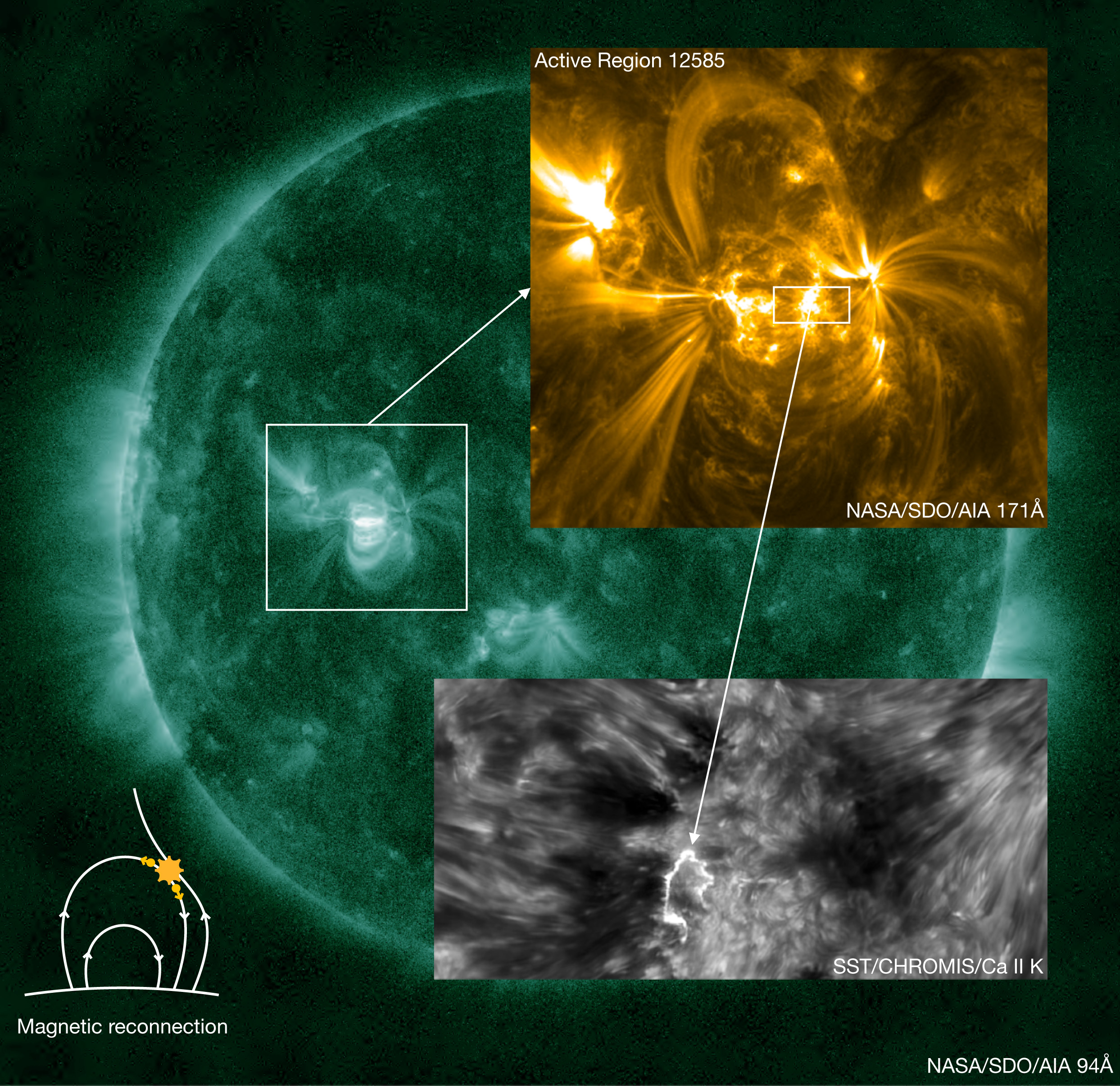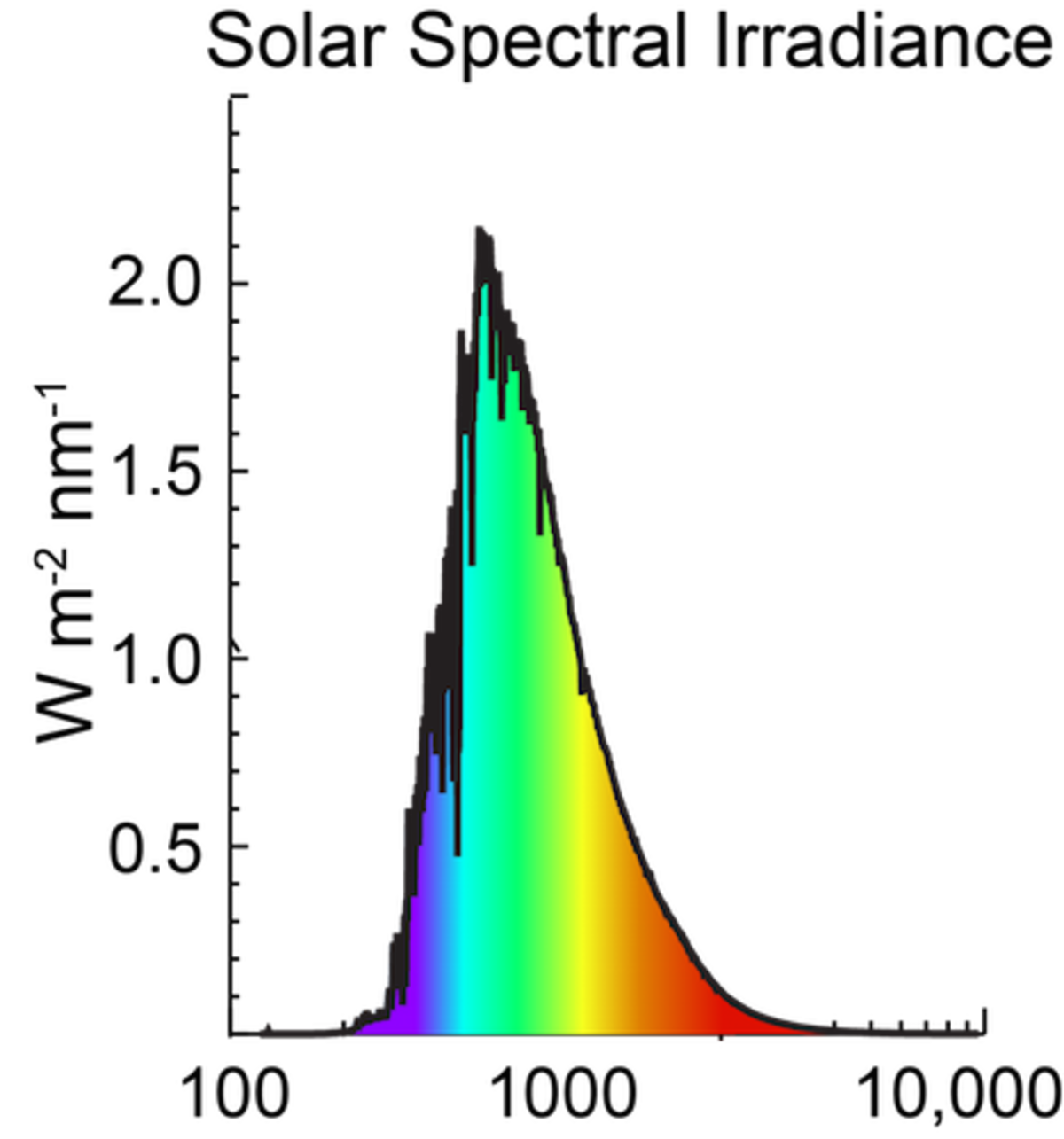Copyright 2024 Robert Clark
A puzzle in solar science that has existed for 150 years is the corona heating problem:
Why is the sun’s corona 200 times hotter than its surface?
The paradox has astronomers scratching their heads over magnetic waves, nanoflares, and the now-debunked element coronium.
BY BRILEY LEWIS | PUBLISHED APR 12, 2023 6:00 AM EDT
https://www.popsci.com/science/how-hot-is-the-suns-surface-corona/
The Sun's surface is at about 10,000 F, 5,500 C. But the solar corona reaches millions of degrees. How is it possible to get so much hotter hundreds of thousands kilometers away from the Suns surface?
Noted solar astronomer Eugene Parker for whom the Parker Solar probe was named suggested it was due to nanoflares small flares emanating from the solar surface much smaller than the usual solar flares:
ScienceCasts: The Mystery of Nanoflares.
But what causes the nanoflares? Could it be asteroidal impacts? The argument could be made they are too small to cause any visible reaction on the Sun. But the question is of the local impact. The Sun’s escape velocity at its surface is 600 km/s. That is a tremendous amount of energy for a body impacting it at that speed. When material is thrown up after the impact the high temperature could be maintained far above the surface.
Nanoflares and coronal heating.
Micro-flare observed on 4 September 2016 with NASA SDO/AIA and the Swedish 1-m Solar Telescope.
The image shows a micro-flare observed on 4 September 2016. Magnetic reconnection in the corona as sketched in the cartoon in the lower left produces a hot loop of more than 7 million degrees. This hot loop is visible as the bright area in the green background image taken with the Solar Dynamics Observatory (AIA 94 Å). The active region with bright magnetic loops is shown in more detail in the yellow inset, corresponding to plasma of less than 1 million degrees (AIA 171 Å). The reconnection event in the corona produces fast electrons that hit the lower atmosphere with high energy. The impact region is very small and is shown at high resolution in the image taken with the Swedish 1-m Solar Telescope on La Palma. With the European Solar Telescope, we will be able to study the magnetic environment of the impact region in even finer detail.
https://est-east.eu/?option=com_content&view=article&id=920&Itemid=622&lang=en
For instance Jupiter’s escape velocity is 60 km/s and we saw the tremendous resulting impact from comet Shoemaker-Levy when it impacted Jupiter.
Jupiter in infrared, Shoemaker-Levy 9 collision (left) and Io (right) by Max Planck Institute for Astronomy
But the major, key reason for suspecting it is this: there is a type of nuclear fusion called impact fusion. It arises when bodies are made to collide at hundreds of kilometers per second relative impact speed.
Impact Fusion Workshop ~ National Security and Resources Study Center
LOS Alamos Scientific Laboratory Los Alamos, New Mexico
LOSALAMOS SCIENTI
LABORATORY
PostOfficeBox 1663 LosAlamos,New Mexico87545
July 10—12, 1979
There are private fusion research concerns now investigating this to bring about controlled nuclear fusion.
Recent observations of nanoflares have observed million degree temperatures locally around the nanoflares origin point on the Sun’s surface, while the surrounding area is at the normal 5,500 C temperature.
So why don’t we see the asteroids during imaging of the nanoflares? It could be their small size. The Sun is so bright it completely washes out the asteroids that may be only a few kilometers across.
Recent observations and theoretical modeling suggest the million degree temperatures seen in the vicinity of the nanoflare origin point on the Sun’s surface should be able to be communicated to the corona-sphere thousands of kilometers above the Suns surface:
Heating the corona.
So far, these bright loops appeared to be tiny flares – but did their heat actually reach the corona?Bahauddin looked to NASA’s Solar Dynamics Observatory, which carries telescopes tuned to see the extremely hot plasma only found in the corona. Bahauddin located the regions right above the brightenings shortly after they appeared. “And there it was, just a 20-second delay,” Bahauddin said. “We saw the brightening, and then we suddenly saw the corona got super-heated to multi-million degree temperatures,” Bahauddin said. “SDO gave us this important information: Yes, this is indeed increasing the temperature, transferring energy to the corona.” Bahauddin documented 10 instances of bright loops with similar effects on the corona. Still, he hesitates to call them nanoflares. “Nobody actually knows because nobody has seen it before,” Bahauddin said. “It’s an educated guess, let’s say.”From the perspective of the theory that says nanoflares heat the corona, the only thing left to do is to show that these brightenings occur often enough, all over the Sun, to account for the corona’s extreme heat. That’s still work in progress. But observing these tiny bursts as they heat solar atmosphere is a compelling start.
https://www.nasa.gov/solar-system/this-may-be-the-first-complete-observation-of-a-nanoflare/
Additionally I was startled see to what would be the kinetic energy of an asteroid impacting the Sun at the 600 km/s escape velocity. Asteroids have been estimated to have densities in the range of 2,000 kg/m3 to 5,000 kg/m3 . The iron-nickel asteroids would have the higher density. This is important because they could also maintain their cohesiveness as they impacted the Sun.
Searches of a population of asteroids inside the orbit of Mercury, called vulcanoids, have been unsuccessful. This is because you have to look at the bright solar disk to detect them. But such searches put a size limit of 6 km wide on them. So assume the asteroid has size, say, 5 km across, with density, say, 4,000 kg/m3 . At that density the mass would be 4,000 kg/m^3 * (6,000 m)^3 = 8.64 * 10^14 kg. Now suppose this impacted the Sun at 600 km/s. Then the kinetic energy of that pact would be:
(1/2) * 8.64 * 10^14 * (600,000 m)^2 = 1.55*10^26 Joules. That is a tremendous amount of energy! To put in perspective the energy the Sun puts out each second is 3.86 * 10^26 watts. So if the asteroid deposited that energy in, say, 1 second, it would be a significant percentage of the total energy the Sun puts out in a second!
However, asteroids of kilometers size impacting the Sun must be quite rare, judging from this graph of asteroid impacts to Earth by size:
About the likelihood of asteroids impacting the Sun in accordance to the change needed in their established orbital velocity, if they started further out in the Solar System, much less velocity change (delta-v) would be needed to direct them to impact the Sun.
Key confirmation required is to confirm the existence of these small solar impactors. Observations in the visual light spectrum have not succeeded. This is the solar irradiance spectrum showing the range of intensity’s according to wavelength:
You see it is vanishingly small at extreme ultraviolet wavelengths and at radio wavelengths around 10,000 nm, 10 microns, and above. The problem with observations at the extreme ultraviolet is that not large enough telescopes have been launched to observe them at less than 6 km diameters (the extreme UV is absorbed by the Earth’s atmosphere.)
Then the suggestion is to use large radio telescopes at the micron and above wavelengths to detect the close in asteroids.
One radio telescope that might manage it is the ALMA radio telescope array:
ALMA Demonstrates Highest Resolution Yet
| Science
The Band-to-band (B2B) method demonstrated this time to achieve the highest resolution with ALMA. In the B2B method, atmospheric fluctuations are compensated for by observing a nearby calibrator in low frequency radio waves, while the target is observed with high frequency radio waves. The top right inset image shows the ALMA image of R Leporis that achieved the highest resolution of 5 milli-arcsec. Submillimeter-wave emissions from the stellar surface are shown in orange and hydrogen cyanide maser emissions at 891 GHz are shown in blue. The top left inset image shows a previous observation of the same star using a different array configuration with less distance between the antennas and without the B2B method, resulting in a resolution of 75 milli-arcsec. The previous resolution is too coarse to specify the positions of each of the two emission components. (Credit: ALMA (ESO/NAOJ/NRAO), Y. Asaki et al.) Download image (1.3MB)Note the importance of this is that if it is confirmed then we know impact fusion does indeed work.
Bob Clark









1 comment:
Very interesting idea! Could be the solution, that's for sure. -- GWJ
Post a Comment